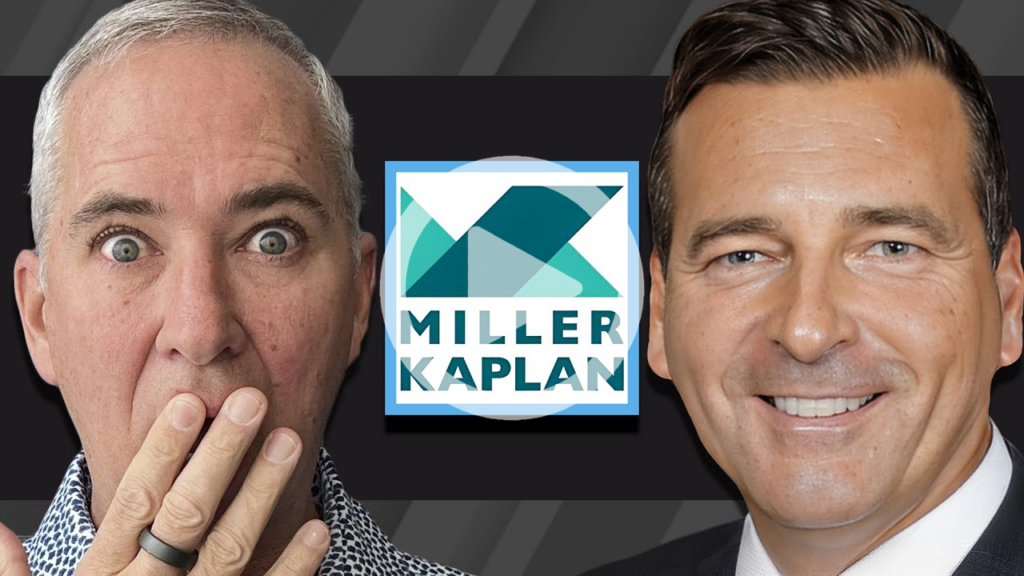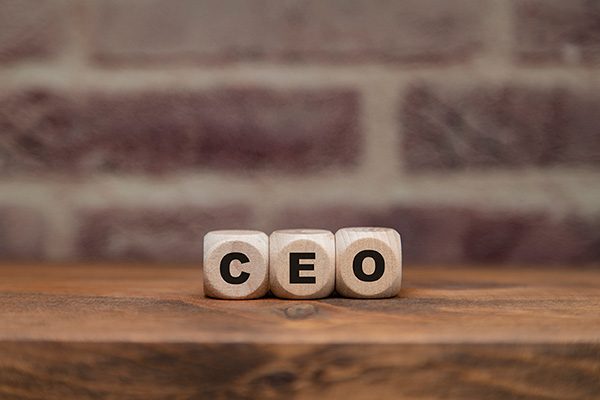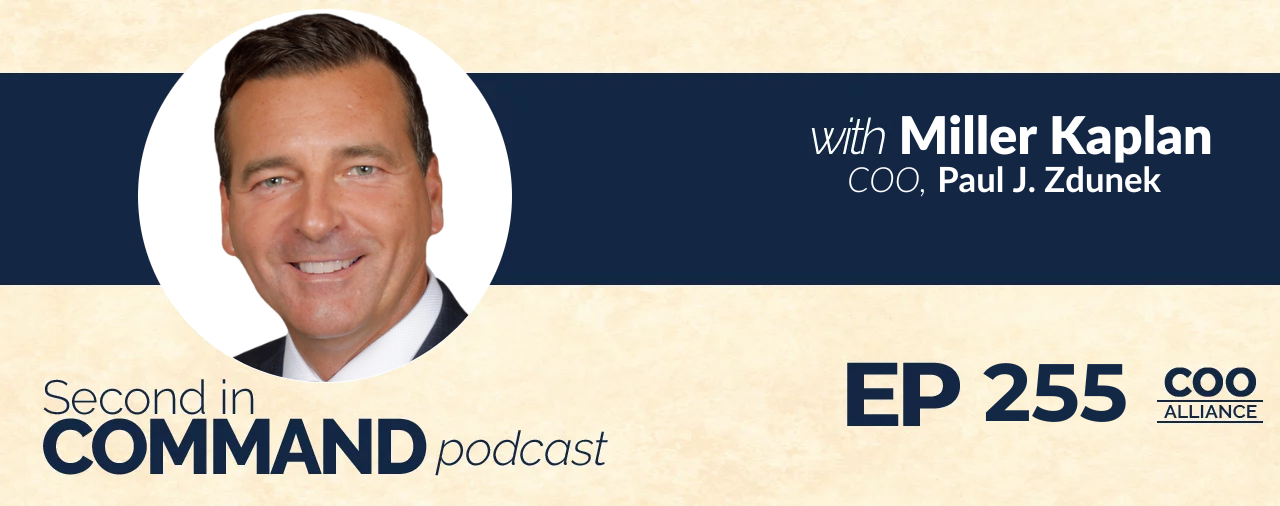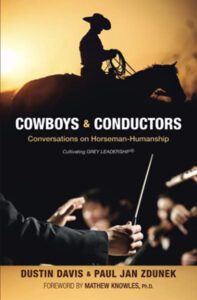Our guest today is Paul J. Zdunek, author, speaker, conductor, Grey Leadership expert and COO of Miller Kaplan
Paul has over 20 years of experience providing business leadership and advisory services for both nonprofit and for-profit organizations. He has been a Chief Restructuring Officer, Business Transformation Advisor, Change Management Leader, and Interim Executive for institutions requiring financial stabilization or organizational revitalization. He is often engaged by organizations requiring investigatory services to assess financial discrepancies, organizational inefficiencies, human resource challenges, and leadership conflicts. Paul has also designed and led proprietary transformational initiatives that help organizations reach their maximum potential through custom designed strategy sessions.
As part of his decade-long career as a musician/conductor, Paul has led or collaborated with The Baltimore Chamber Chorale, The Greater Twin Cities Youth Symphonies, Opera Vivente!, Minnesota Opera, The Dale Warland Singers, The American Composers Forum, and The Saint Paul Chamber Orchestra.
In This Conversation We Discuss:
- How he brings the skills of a conductor into the business world.
- The importance of the CEO/COO relationship.
- Paul’s book, “Cowboys and Conductors.’
- Why personality profiles are massively misused in the interview process.
- The powerful connection between people and horses.
Resources:
Connect with Paul: LinkedIn | Twitter
Connect with Cameron: Website | LinkedIn
Get Cameron’s latest book “Second in Command: Unleash the Power of your COO”
Get Cameron’s online course – Invest In Your Leaders
—

Watch and Subscribe to our Podcast on Youtube
You’re going to love this episode. This is the only time that I’ve ever had a conductor of an orchestra, now COO on the show. It’s super cool. You’re going to get some good insights as to how you can take the skills of being an orchestra conductor for 7 or 8 years and bring that into the business world, into the COO role talking about leaders of leaders, heart center leadership.
He’s also a bit of a horse whisperer. He wrote a book called Cowboys & Conductors, and he is going to talk about what we can learn from horses in the business world as well. Also, the different stresses of being a CEO, which he has been before, and being a COO now as well. We’ll see you on the inside. This is when you’ll be sharing for sure.
—
Paul, welcome to the show.
It’s great to be here. Thanks for having me.
I am looking forward to learning from you and to hearing some of your stories. Before we dive into the whole Miller Kaplan story and your role as COO, we talked prior to doing this interview about some various things I’m going to ask you about. You said something fascinating. Of the 250-ish guests that we’ve had, this is a first. You’re a former conductor and not a train conductor but an orchestra music conductor.
That’s funny you say train conductor because a good friend of mine who was an orchestra conductor, his neighbor for many years thought he was a train conductor. As an orchestra conductor, I also did some choral work as well. That’s how I started my career as a conductor. I got into music when I was a kid and switched careers. I still use my conducting lessons, training, and experience.
I don’t think that this is a career that anyone in the history of ever knows how you get started in except for conductors and people in an orchestra. You don’t bump into people on the streets that go, “I know how you get that job.” How do you start that? Do you get frustrated being a musician and do it? Do you need to control the chatter of the musicians? What is it?
It is a great question. Usually, the path is you start in music. When you go into a music career, you can’t start it when you get to college. You can’t think, “I might pick up the violin and be a musician.” Usually, our training is as early as 3 or 5 years old. I got a late start at twelve and my life changed. I grew up in Baltimore. A choir director started a boy choir, pulled me off the streets, and put me into this choir. I thought I want to be that person. I want to be that mentor. Most people become a musician first, whatever the instrument is.
I don’t know what it is that calls certain people to want to be up in front, but it’s more of a coach. It’s a leader of leaders. That could be business. What causes people to be a COO, a CEO, or a leader of anything? It’s the same thing. It’s within the music path. Conductors like CEOs are necessarily not greater, more experienced, or more talented. They have different kinds of skills that allow you to work with a group and get a certain effect, a certain goal accomplished.

CEO COO Relationship: CEOs are not necessarily greater or more experienced or more talented; they just have different kinds of skills that allow them to work with a group and get a certain goal accomplished.
They’re very similar to CEOs for another reason as well. They’re the leader of leaders, and you’re trying to orchestrate and organize all of these people doing very different tasks and projects to get aligned. Work together, collaborate, have a consensus, and produce great work, but you’ve also got your back to the audience. It’s not about you. The spotlight isn’t about you. It’s about making them look good. Do you think that’s something that you bring in as the COO as well at Miller Kaplan, that you’re trying to make the team look good?
Absolutely. The people that you’re working with are your strength. Those who try to go at it alone or take that spotlight that you’re talking about, it’s not authentic, and people can feel that. If you have the right team, which I’m a big believer in, having this racehorse team where you are not pushing them. You’re not prodding them. They’re going on their own. All you’re doing is making adjustments and making them the best they can be. That’s a whole other conversation. How do you develop a racehorse team?
It’s interesting because when I did first start my non-music career as an executive, I thought that I had to do everything. I thought that I had to take everyone’s burden and do their job for them and help them. That created the opposite effect. It created a disengaged team because they felt I was micromanaging when what I was trying to do, I thought was give them bandwidth. The buck stops with me and I should take on all their burden. It was an early lesson that I still have to remind myself of. People want to feel engaged, they want to feel part of the solution, and you have to give them the time and the space to do that.
The one-man band never sounds as good as the orchestra. Back to the Mary Poppins scene of whatever his name, it’s ridiculous. Come on. You’ve got to stop this.
A conductor doesn’t make any sound. He’s the only person up there not making any noise. You are in a completely supportive role and it’s a humbling role. If you have a racehorse team or this leader group, they’ve been doing whatever it is their expertise for years and years and years. Who are you to come up and tell them how to do it better or differently? Therein lies the training.
It’s funny, I was asked the other day on social media. Somebody said, “What’s the best musical experience of your life?” I had two flashbacks, now a third. The third was Elton John, front row center floors. That was years ago. Unbelievable. The two that hit me very quickly had an orchestra involved. I’m not necessarily normally an orchestra person, but one was about four years ago with my two boys. We saw The Who, playing with the Symphony Orchestra on stage, and they played some of the songs from Tommy. I was like, “Are you kidding?Have you seen that at all?”
I know of the show.
I’ll send you a couple of clips later from my phone. The rock opera was unbelievable. It was so powerful. That was one. The second one was completely different at the top of Whistler Mountain in 1994, in the summer. We went up and saw the Vancouver Symphony Orchestra with Sarah McLachlan playing. We’re sitting on the grass in a bowl. We got these king sheets from the hotel that we sat on, and we brought some food up. We smoked the joint. We sat and listened to the orchestra play with Sarah McLachlan singing, and I’m like, “This is music. This is incredible.“
It’s interesting you say that because I do believe orchestra music nowadays, in this digital and virtual world, is the new hip thing. It’s acoustic, natural, and authentic. To hear that live, in particular, is awesome. We don’t have that experience anywhere else. Everything is so synthesized and transmitted through digital, this and that. People are getting sick of it. People are also getting sick of social media and phones. I’m seeing a wave here. What I’m hearing around the businesses is people want to come back and be in person because you can’t replace that.
The music that the orchestra plays doesn’t have to be from the 1600s either. It can be interesting and fun. I saw another one with my kids when they were quite young. We saw the orchestra and every single song they played was The Beatles. It was amazing. It was unbelievable. It was a pretty formative time for my kids to start to love music. It was interesting.
The last part about being a conductor in business is Ben Zander. His TED Talk had a very profound impact on the CEO of 1-800-GOT-JUNK? where I was the COO at 1-800-GOT-JUNK? Brian talks about Ben as having this extraordinarily profound impact on him in business as well. You said you know him. Is there anything you’ve pulled from him into the business world as well, do you think?
He’s right on. What I talked about in the book that my colleague and I wrote, there are similarities there. It is about translating being a leader of leaders. When you’re a conductor, you are interpreting data. You are understanding, looking beyond the obvious, when you’ve got dots on a page and you’ve got instructions from the composer who might be 200 years dead at this point. You’ve got to figure out, what does it all mean? What does he or she want to say? How do you make it yours? How do you convince 80-plus people who are experts in their field to go along with it? How do you convince others of your interpretation and do it in such a compelling way that even the audience buys into it?
There’s a lot of psychology that goes into being a conductor and being a musician. He hits on those things. He and I got along right away because of that because we spoke the same language of business and music. The thing that I’ve had the pleasure of doing is being in business and on both sides of the footlights, so to speak. I’ve been on stage as a conductor, but I’ve also been in both CEO and COO roles and understand how that plays out when you have payroll, you’ve got widgets to sell, partners to convince, or shareholders. I feel again that I’ve seen both and can connect the two worlds together.
I want to talk about your book. You mentioned your book. You say it was called Cowboys & Conductors.
It’s Cowboys & Conductors: Conversations on Horseman-Humanship. I met a client of mine who is a horse-whispering cowboy. I was helping him set up his ranch. When I first went there, he was working with horses, and I was watching him for a few minutes. We started talking, and I was asking him how he works with horses. He trains new horses but also rehabilitates horses for owners. How he works with them, we found out is how I work with people and how I lead people. A horse can’t come up and say, “I’m hungry. I’m tired. I need this. I need that.”
You’ve got to feel it. You’ve got to understand it. Horses are extremely intelligent beings as well. They can feel your heartbeat from 4 feet away. They can feel your anxiety or presence. A lot of that is true for people. We ignore that piece of it. A lot of CEOs and business leaders don’t want to hear this, but the people part of it is what drives the bottom line and not the Kumbaya stuff, but instinctually working with people like one would work with a horse.
It’s the whole thing. I’ve said for years now that none of this matters. We’re all going to die. Every single one of our employees is showing up with something that bothers them, is struggling with them, and they’re worried about. If you can connect with them as a human, they’ll go through brick walls for you to build the company. If that’s all you do, on the company, you’re dead in the water. There are more important things for them on any day-to-day than there are for you and me as well.
It has to be authentic. It can’t be something that you learned at a session or a book that you read, even though I said you should read our book. It’s about internalizing that and making it real because people, like horses, could smell your authenticity. If you’re being that friendly, engaging boss, it doesn’t land well.
It’s interesting. I spent a few days with a CEO of a company. I’m grasping at what his name was. I can’t remember his name. He’s a YPO member and he’s blind and has been blind since around 10 or 12 years old. We had dinner together one night and we were sitting at dinner. He is back to the rest of the restaurant because he can’t see anything that is going on in the restaurant anyway. He takes the worst seat in the place. I remember the waitress walked up to him and he opened up the menu.
He said, “I’d like this wine and this wine, please.” He pointed and mentioned the names, and we’re like, “I thought you were blind.” He goes, “Yes, but I’ve learned to read the feelings of the words on the page.” We’re like, “What?” He is talking about, “I can feel the vibe of the restaurant. I know it’s there.” As the six of us are buying in, he goes, “I’m messing with you. I called earlier to see if they had those two wines.” What he said was, and we talked about it later, that his other four senses are very sharp now. He doesn’t have a sense of sight to rely on. His sound, touch, and smell are much more acute than ours are. It was an interesting thing to think about how we develop those as leaders.
That’s exactly what we talk about in the book. That’s how one works with horses. That’s how a conductor works with musicians. You were working in real time. You were watching body language and in the conductor’s case, you were watching 80 people at one time. You have to have a peripheral vision that’s sharp. You have to have an instinct that knows when people need you and when they don’t need you. Lighting matters. The temperature matters. What you’re wearing matters. What the rest of the audience, how they’re feeling and breathing matters. All of it. It is about developing that instinctual sense of listening, feeling, seeing, picking up on all those clues, putting them into the sausage maker in real-time, and figuring out, what you need to do next.
We all have that muscle. You need to authentically develop that. There are tools, books, sessions, and so forth. There are personality tests, but the personality tests, I’m a green or red. I’m introverted or extroverted. Those are helpful, but one has to dive deep into who you are as a person. What drives you since your childhood in your personal and professional relationships that deep core, and then figure out what drives others and try to connect those things or understand how you can work those things. That takes time. It’s a natural way that we can all work together if we put the time into it. It’s like exercising. You can’t do it overnight. You can’t run a marathon in one day. Sometimes we don’t have the discipline to work through some of that.
I have a friend who did. He was out for dinner one night with friends, and they said they were running a marathon the next day. He goes, “I’ll join you.” He ran a sub-four, but he was always an athlete. He was always a runner. I’m like, “That’s ridiculous. Who does that?” It’s that whole there’s an exception to every rule. Miller Kaplan is a prior client of yours. You had hired them before and then got brought in as the COO. Did they find you? Did you find them? How did that work?
I had a nonprofit client that needed another accounting firm. I did hire Miller Kaplan about years ago. The partner on the scene was someone who I got along with. We stayed in touch from a professional standpoint, even though I had moved on. I was doing consulting as we were talking about earlier. I love consulting, but in the consulting world that I was in, which is change, transformation, and getting organizations to do the right thing, all the stuff we’re talking about, two things were happening.
1) It was taking so much energy out of me to convince CEOs that this change that we’re talking about is important and will help the bottom line. 2) Always having your eye on the next client can be distracting. When I saw that Miller Kaplan had an opening for a COO on LinkedIn, I thought I could take all of what I’ve been doing and put it into one organization.
What sealed the deal for me was having the interview with a managing partner here as the CEO of the firm. He and I are on the same page with what you and I are talking about. I said to him that day, “If I could spend all my time doing the work and not spending half of it trying to convince you that it’s important, or how we go about it is important, that would be awesome.” I got the job and it’s been that. I haven’t had to convince the CEO that this kind of people work is important.
A couple of parts to that. One is, how did you and the CEO divide and conquer roles and responsibilities? Who does what? Was there a prior COO, or was this a new role for the organization?
It’s a newly purposed role, one that does get into all of the areas of the company and does works on strategy, and does execute. It’s interesting because this is most likely every company, but the CEO role is almost, if we go back to the art world, that artistic director, that visionary who has the bigger picture, and here’s what I want, where I want the place to be. That relies on the CEO of that artistic organization, whether it’s a museum, an orchestra, or whatever, to carry out the business pieces of it and make sure that it gets done. You work as partners. Both can be strategic and have ideas for execution.
The secret sauce is both of you understand what your roles are but also be empathetic to those roles. Also, understanding at the end of the day, “This is your role, this is my role, and here’s how we might even conquer things together.” You have to have lots of layers of trust and relationship to make it work. You know as well or know better probably that you can’t approach it from a business stand. You need to have a good relationship with that person in order for it to work. On any day, things are coming at you, and it’s almost being at war. You’ve got to have each other’s back, even though you’re not in the same room. You got to know that. It’s complicated and fascinating.
you’re touching on some good stuff. My book has come out, The Second in Command.
I saw that.
One of the things I talked about in that book is building that communication, trust, and relationship with the CEO in a very yin and yang way. Sometimes we need to, as the COO, be the person who tells the CEO that they don’t have any clothes on. It’s like The Emperor’s New Suit. Tell them where they’re screwing up. Tell them we disagree. You seem very empathetic and people-centered. How do you do that in a way that they hear you and are receptive to that?
A couple of things. One, data is important. It’s using data. Also, not making it personal. Sometimes, we read the tea leaves differently, and it’s not good or bad. It’s hard to answer because I look at things whole holistically. When you have a relationship where you know that you’re both in a business sense, you’re both trying to do what’s best for the firm. It’s not a personal thing. It’s not an ego thing. You can call each other, and as you said, yin and yang. Both can call each other. You’re trying to figure out life together.
No one teaches you how to be a COO or a CEO. I remember the first day on the job when I was a CEO. I sat down at my desk and I’m like, “Okay. Now what?” I got the job, and here I am. What am I supposed to do every day? Several years later, it’s the same feeling. What am I doing here? Should I be here? If you are empathetic about that to your CEO, then he or she is feeling the same thing you are. You’re in it together.

CEO COO Relationship: You’re trying to figure out life together. No one teaches you how to be a COO or CEO.
Can you speak to the difference between the CEO and the COO? You’ve had a pretty interesting lens that not a lot of people do. Often, they’ll go from the COO up to the CEO role, but not as often that they’ll be in both roles at all.
Yes. I’ve thought about this a lot. The CEO, the buck stops there. It’s the first person on the line of defense. The COO can get a lot of things done behind the scenes, work legislatively, and work with the CEO. They have different stresses. The CEO role has stress in that no matter what happens under you, you are responsible for it. The COO’s stress might be, “I don’t have the last say. If we don’t agree, not get my way, but there’s a hierarchy where you don’t have the last say.”
That shouldn’t matter at the end of the day if you are both trying to figure out what’s best for the company. To me, it’s just a title and a reporting structure. The COO is more tactical and strategic, whereas the CEO is more strategic and visionary. Both complement each other. In my case right now, I feel we both have similar strengths, and yet still enough of a difference on what should be next, what is the strategy, and how to execute that is different enough that we can learn from each other.
You mentioned some personality profiles earlier. Are personality profiles something that you use in the business? Do you use them in the interview process, post-interview? Do you use them and where?
I don’t use them. They’re interesting, but I try to assess people based on the things that we’ve been talking about. The things that are in the book, which are the physical, the emotional, asking them questions that, starting an interview, for a job and saying, “Tell me your life’s journey from beginning to middle to where you’re headed.” Often, I’ll hear a lot of things in that and get a lot of signals and clues. I have some other questions that I won’t let people know about. It gives me insight into what makes them tick.
I do try to figure out what their drivers are, and then build a team based on that. Those personality surveys and things, they’re helpful. They can give you different angles of a picture. We don’t spend enough time truly understanding each other on a very visceral, basic level. Nothing against those personality surveys, but we tend to use those as a crutch. It’s an inauthentic way of looking at people. They are not a green or a red. They are a person. That’s harder to do and it takes a lot longer too. I’d rather deal with AI than people, for sure, because it’s a lot simpler. If you can manage through it, the success is exhilarating.

CEO COO Relationship: We don’t spend enough time truly understanding each other on a very visceral, basic level.
We line up fairly similarly with that as well, by the way. I believe that often, personality profiles are massively misused in the interview process. People will rely on them without learning enough about the candidate from doing proper interviews. That’s one. Secondly, I don’t think that you should take a personality profile, and that’s how you build your company. What I like is doing almost one personality. Let’s say I’m talking about the leadership team. I’ll get the whole leadership team to do a personality profile this 2023, and maybe we use Kolbe.
We’ll use that as a starting point to talk about each other and learn how to get together. It’s a prompt. It’s a spark for the fire to have some discussion. It’s like the cards that you sometimes find on dinner tables. That’s not the whole dinner, but it gets some fun conversation going past what you do for work, which none of us give a shit about. The second thing I do is in 2024, I’ll do a different personality profile. We’ll then do DISC, and then we’ll do the Colors, and then we’ll do PSI. Every year, we’ll do a different profile on each other to learn more about each other, but not as the be-all, end-all.
I agree with you. That is the more responsible way to do it. Using that as the end-all, be-all, it’s not helpful. It diminishes their importance.
My executive assistant and I talked about one of the personality profiles called Love Languages. We said, “You can take love language into the workforce.” For physical touch, I’m not going to walk up and start having the same physical touch with one of my employees that I might have with my wife, but the physical touch might mean a pat on the back or a high five. For words of affirmation, I’m not going to use the same words of affirmation as I use with my spouse and employee, but saying, “Thank you. I appreciate you. You did a great job with this,” can go a mile. It’s not the entire thing. Just because I know their two love languages, that doesn’t mean I know everything about them. I just happen to know a little bit.
You have to use all of that. All the things we’re talking about are part of your toolkit. What people miss is picking whatever that is as well. “I’m going to be this manager and use this technique.” You become one-dimensional. That’s why I say, if you have that deep toolkit, you have to then feel what’s happening in front of you. You may walk past 5 people in your office within 10 feet, and each 1 of them needs something different from you. You’ve got to be able to adjust to that. Again, that’s where conducting or horse training comes in. You can’t say, “I need you to do this now. Especially, if you do that to a horse, they could bite you and kick you and you could be dead. We, as humans, don’t do that too much, but the instinct is there for sure.
I met a woman years ago who did some equine therapy, horse therapy, and it’s not therapy for the horses. It’s taking people out to work with horses. The horses teach. Do you ever do that with any of your teams? Do you ever take your employees out and leadership teams out and have them work with horses and talk to them?
We are talking about that. It’s powerful. These beasts are huge and they can be very daunting like people can be if you allow them.
She was doing it with troubled youth and kids to see the connection between these kids. You could see that it was unbelievable. It was a super powerful connection.
We have that as humans, but we tend to ignore it. We put it in a box, or we don’t tap into that piece of us, but we have it. There’s a Harvard professor who did a study and she said, “When you meet someone, you’ve assessed them within two seconds. Do you trust them? Do you like them?” There are all these things going on in the background that we don’t tap into, but we can’t. That’s what horses do.
Horses size you up, and the reason horses are used for those therapies is that they can get to a deeper level of understanding and emotion right away that those kids are starving for. They can’t articulate, but they can feel things. We can do that as people. We can be the same people if we allow ourselves to do that. I know that sounds woo-woo and touchy-feely. I do see, as you said earlier, saying hi and being genuinely concerned about people’s day is all it takes sometimes to start down that journey. It’s not that you have to commit to a full relationship with everybody, but it takes time.
It’s also okay to be a little bit woo-woo in business because it’s 2023. It’s not 1985. We’re allowed to tap into some of this stuff.
Slowly but surely, yes.
What about your skill development as a leader? Where have you had to work on your skills over the years, and what are you working on?
One of the things, as I mentioned earlier, that I constantly try to work on is not jumping in and providing that bandwidth to my team members when I feel they need it. People feel I’m micromanaging or making them feel that they’re not qualified to do it, so I’ve got to do it. I said the opposite, “I see how stressed you are, and I figured I’d pick up this piece of your job.” Not communicating that and continuing to be aware of that, my interest is to help them. It’s not to micromanage them or not to say that you’re not doing it. You’re not qualified to do your job. I’m trying not to be that, but that’s a driver of mine.
I was saying earlier. My driver has been being that savior, having that savior complex, and helping people who need the help, that underdog. That’s how I got into helping organizations that were flatlined. I wanted to go in. As soon as I hear that they were not doing well, I want to put my cape on, jump in, and help. Sometimes that’s not the right thing to do when it comes to your team. Sometimes they need to figure things out, and being there and doing everything for them is not necessarily the best solution. I’m still working on that from day one of being the CEO to all these years later.
Let’s go back to the 22-year-old Paul. You need some advice and you turn to your current day self. What advice would you give yourself back then that you know to be true now?
Don’t try to convince others of how awesome you are. Add value, especially if they’re going to hire you or if they’re talking to you. They already think you’re awesome. You’ve already passed that test. Figure out how you can add true value to people and start there. I’d also say, don’t lose the Disney magic. I grew up on Warner Brothers cartoons where the coyote was blown up and then in the next scene, he’s back on his bike or whatever. I haven’t forgotten that.
If you don’t continue to believe in something that the glass is overflowing or that there’s that possibility that the coyote will survive one more time, that positivity, that Disney magic thing has carried me through life. A lot of people let other people blow that flame out or you get beaten down so much that you lose it. keep it. Do everything you can to protect it.
I love that, Paul Jan Zdunek. Thank you very much for sharing with us. I appreciate your time, Paul.
My pleasure.
That was great.
Important Links






